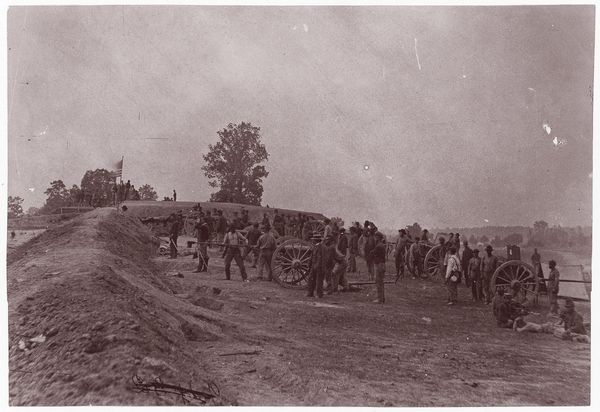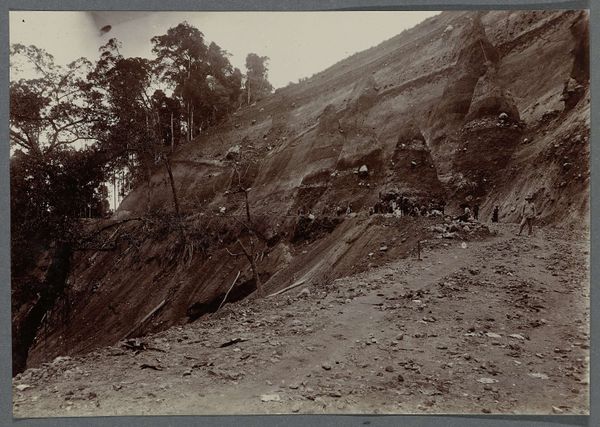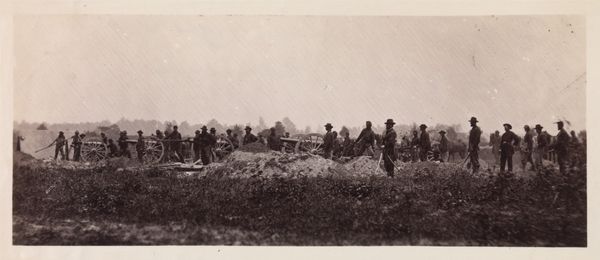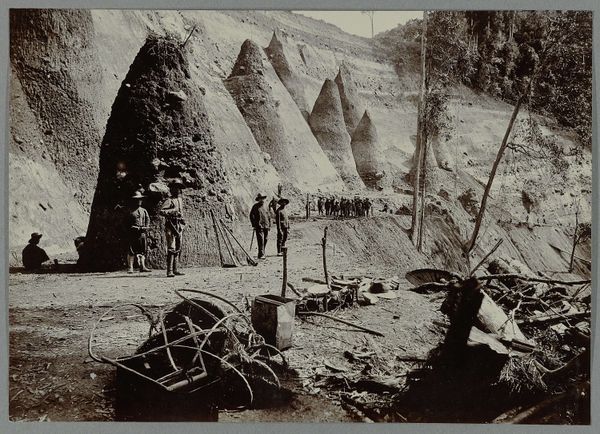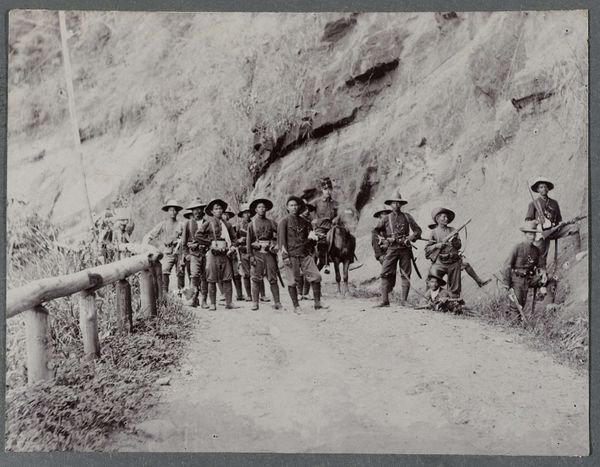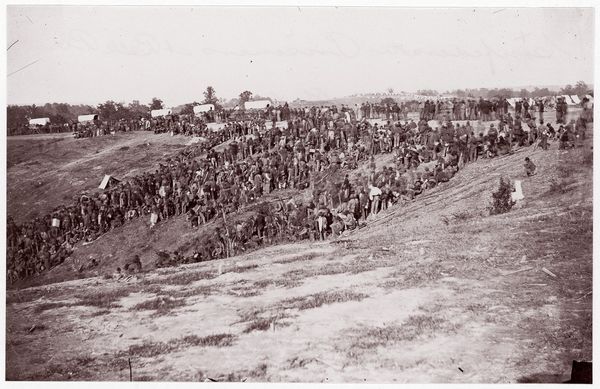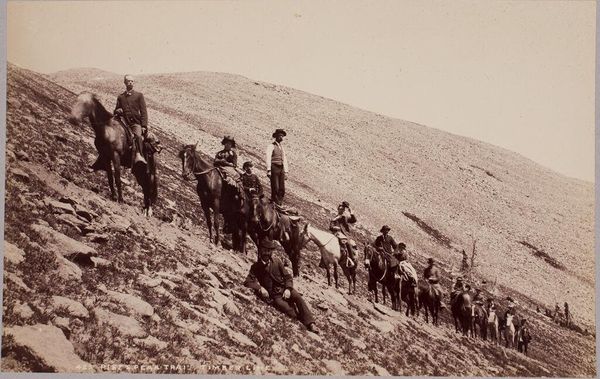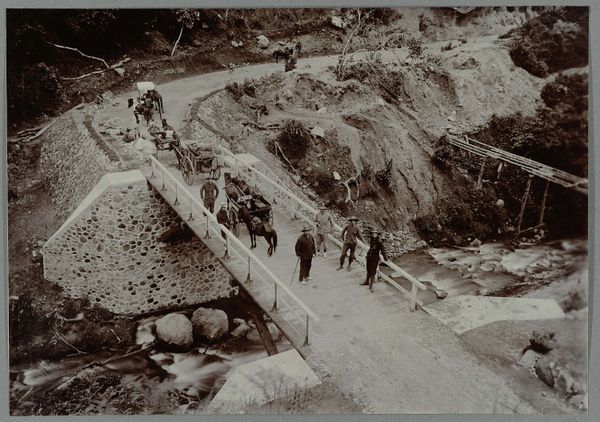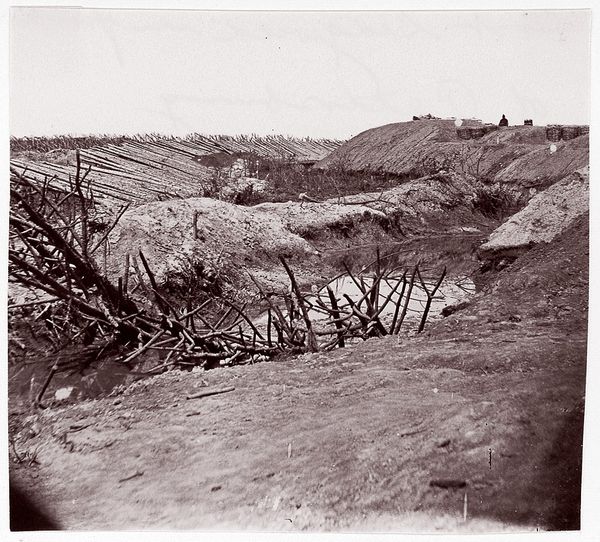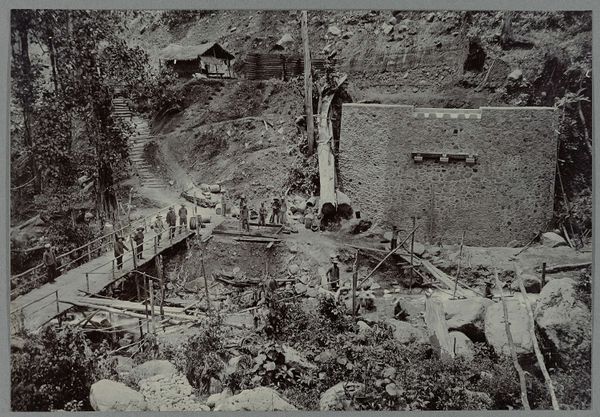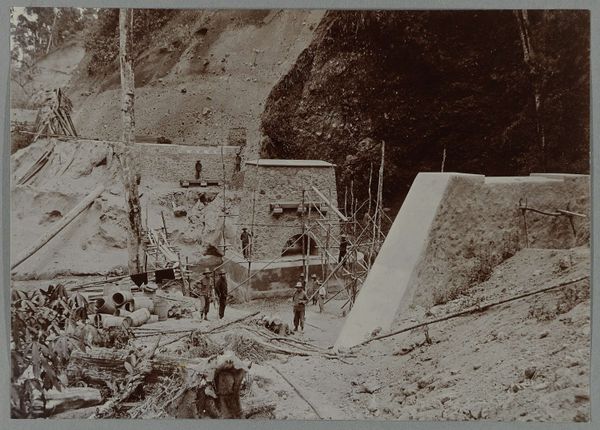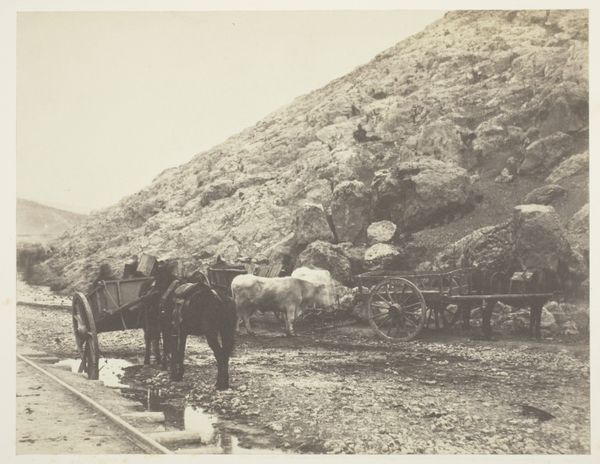
photography
#
landscape
#
charcoal drawing
#
photography
#
realism
Dimensions: height 138 mm, width 200 mm
Copyright: Rijks Museum: Open Domain
Editor: Here we have an intriguing photograph from between 1903 and 1913, titled "Aanleg van de weg langs een helling van de Woih ni Tanggo Besi," which translates to “Construction of the road along a slope of the Woih ni Tanggo Besi.” It has a sort of stark, documentary feel, showing people working on what looks like a massive road-building project. What do you see in this piece? Curator: This image vibrates with symbolism when considered in the context of colonialism. The road itself, literally carved into the landscape, represents the imposition of external power upon a land and its people. Look at how the workers are dwarfed by the scale of the terrain. Does that suggest anything to you about the relationship between colonizer and colonized? Editor: Absolutely. They seem so small against that huge hillside, their labor almost futile. Curator: And what does that road, the new artery, facilitate? The extraction of resources, the movement of troops, the erasure of traditional ways of life. The act of building becomes an act of cultural transformation, often forced and deeply impactful. It's a photograph that whispers stories of cultural loss and exploitation, even a century later. Does that influence your interpretation of its stark, documentary feel? Editor: It does. I hadn't initially connected it to those power dynamics, but now I see how powerfully the image conveys that sense of imposition. Curator: Visual media, photography in particular, carries a historical weight that connects the present viewer to these past struggles. Consider how the symbolism persists; roads continue to signify progress, but for whom? Editor: That gives me a lot to think about in terms of the lasting implications of infrastructure projects, both then and now. Thank you!
Comments
No comments
Be the first to comment and join the conversation on the ultimate creative platform.
